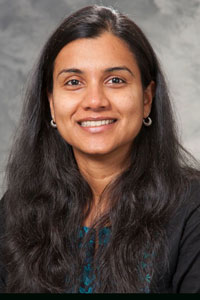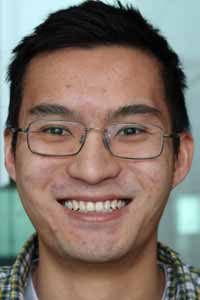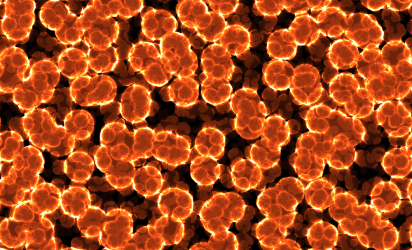We are all made up of cells: skin cells and spleen cells, liver cells and lung cells, kidney cells and heart cells. In fact, the human body is made up of trillions of more than 200 kinds of specialized cells.
Scientists can “reprogram” these specialized, or differentiated, cells and create induced pluripotent stem cells, otherwise known as iPS cells. These iPS cells have the potential to develop into many of the different cell types that make up our bodies, and are becoming increasingly important tools for fundamental biological research, drug discovery trials, regenerative medicine experiments and personalized cancer treatments.
But we still don’t have a clear picture of the molecular events that take place in differentiated cells when they are reprogrammed successfully into iPS cells. As the National Institutes for Health acknowledges, “much more basic research will be required to identify the full spectrum of events that enable this [reprogramming] process.”

In a paper published yesterday in Nature Communications, researchers at the University of Wisconsin-Madison, led by Rupa Sridharan at the Wisconsin Institute for Discovery, have unveiled two distinct, yet interconnected mechanisms that work together to greatly increase the efficiency with which differentiated cells are reprogrammed into iPS cells.
“The biggest disparity between any two kinds of cells is the one that exists between something that performs only one function, like a liver cell, into something that can become a cell that performs any function, like an iPS cell. This is the largest canyon to cross in terms of cellular function,” says Sridharan, who is an Assistant Professor of Cell & Regenerative Biology at UW-Madison, and a member of the Epigenetics Theme at the Wisconsin Institute for Discovery.
Sridharan explains that there are molecular algorithms that tell specialized cells, such as liver cells or skin cells, what kind of cells they are and what functions they need to perform.
“There is a different algorithm that codes for what a pluripotent cell is and what we have found are some very important steps needed to switch between these algorithms,” says Sridharan.
“It’s very interesting because the specialization of a particular cell is no longer permanent”
–Khoa Tran, Sridharan Lab
Understanding this switch between these different algorithms is crucial because one of the issues holding back the widespread use of iPS cells in research and medicine has been the poor efficiency with which differentiated cells can be reprogrammed. Until recently scientists were able to successfully reprogram only a small percentage of the specialized cells they had started with. The differentiated cells would begin to go down the reprogramming path, but the majority would get stuck partway at an intermediate stage.
What Sridharan and others have shown is that adding specific chemicals to cells during the reprogramming process can tremendously increase the efficiency with which iPS cells are generated. But Sridharan wanted to explore further and understand how these small molecules were enhancing the conversion to iPS cells.
“One of the key steps [going from differentiated cells to iPS cells] is the latter stages or second half of reprogramming, and really no one knows what is going on at the molecular level during this step,” says Khoa Tran, a graduate student in Sridharan’s lab and first author of the research paper. “We wanted to tackle this problem and understand how genes related to pluripotency are turned on to generate a functional iPS cell.”
Turns out, the answer is two-fold. First, chemical tags on the cell’s DNA, and on proteins called histones that help structure our DNA, need to be reorganized. These chemical tags, or epigenetic markers, act like post-it notes, allowing individual cells to access only the specific chapters of its DNA instruction manual it needs to read and follow.
Epigenetic changes act as guideposts for cells to turn specific genes on or off at different times. This allows the myriad differentiated cells in our bodies to look, behave and function differently from one another even when they have the same DNA.
Some chemicals, like ascorbic acid (Vitamin C) used by Sridharan and her colleagues, affected the levels of epigenetic markers. This epigenetic reorganization turned on genes needed by iPS cells and started moving differentiated cell along the road to pluripotency.
But reorganizing the epigenetic environment of the differentiated cells was not enough by itself to markedly increase the efficiency with which they progressed into becoming iPS cells. A second event was needed, one that worked through both expected and surprising molecular pathways.

Sridharan, Tran and their colleagues thought there would be some “master switches”, or regulatory nodes, that were different between differentiated and iPS cells. If they could flip these master switches in differentiated cells to how they are in pluripotent cells, maybe that would increase reprogramming efficiency?
“That’s what we were trying to do by adding specific chemicals from the outside,” says Sridharan, “trying to change those regulatory nodes inside and then rewire the network [to facilitate pluripotency].”
There is a class of chemicals that can interrupt molecular signals that allow pluripotent cells to differentiate. As expected, when these specialization signals were blocked, nearly all the intermediate cells progressed into becoming iPS cells.
But something else was going on in those cells. When the specialization signals were blocked other genes that pushed the cells along the reprogramming path were turned on. It was if extra switches had been flipped that not only turned off differentiation signals but also turned on genes containing pluripotency instructions.
What was surprising to Sridharan was that some of the pluripotency genes that were turned on did not appear to need a change in their epigenetic environment.
“What this means is the regulatory regions of some pluripotency genes are actually poised and ready and something [like the differentiation signals] just needs to be removed and it would turn on,” explains Sridharan. “This kind of a very quick control was very surprising to me.”
This synergy between rewiring of the chromatin environment and signaling pathways is a new discovery. “These are two distinct mechanisms,” says Tran, “and we have shown that by disturbing both we can increase the efficiency of reprogramming.”
Sridharan and Tran are now looking to parse out the temporal mechanism of how altering specific parts of the chromatin environment contributes to reprogramming. “It’s very interesting because the specialization of a particular cell is no longer permanent,” says Tran, “and in the right situation, with the right stimuli you can overcome these specializations more easily.”
–Adityarup Chakravorty


You must be logged in to post a comment.